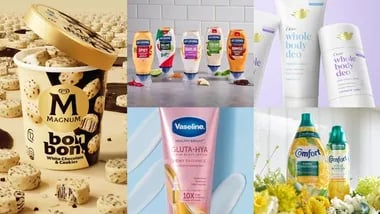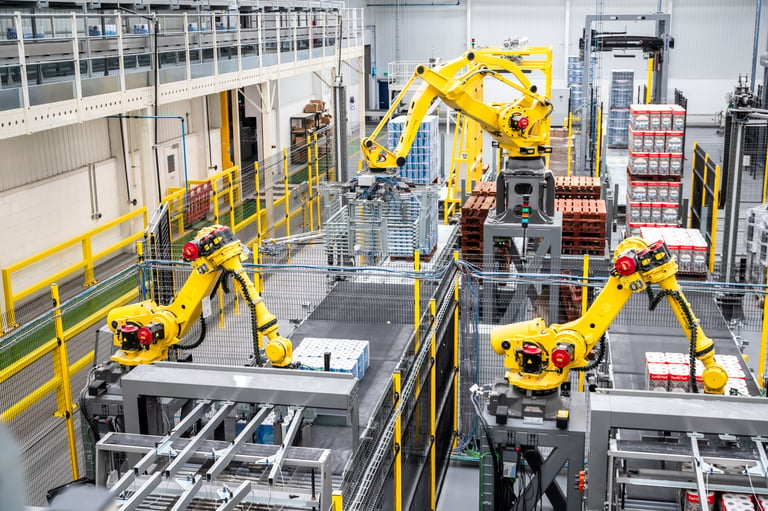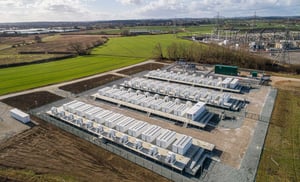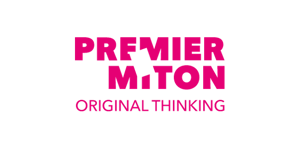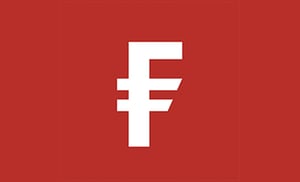Unilever plc (LON:ULVR) has annnounced its first quarter 2025 trading statement.
Resilient performance, full year outlook reconfirmed
| First Quarter 2025 | |||
| (unaudited) | USG | Turnover | vs 2024 |
| Unilever | 3.0% | €14.8bn | (0.9)% |
| Beauty & Wellbeing | 4.1% | €3.3bn | 2.9% |
| Personal Care | 5.1% | €3.3bn | (4.4)% |
| Home Care | 0.9% | €3.0bn | (4.2)% |
| Foods | 1.6% | €3.4bn | 0.1% |
| Ice Cream | 4.0% | €1.8bn | 2.8% |
First Quarter highlights
• Underlying sales growth (USG) of 3.0%, with volume growth of 1.3% and price of 1.7%
• Turnover of €14.8 billion, down (0.9)% including (2.7)% from net disposals
• 2025 full year outlook reconfirmed with 3-5% USG and a modest improvement in underlying operating margin
• Productivity programme ahead of plan, delivering an aggregate c.€550 million savings by end 2025
• Ice Cream separation on track, Capital Markets Day on 9th September ahead of demerger in Q4
• Ongoing €1.5 billion share buyback to be completed in first half of 2025
Chief Executive Officer statement
“We have started the year with a resilient performance. First quarter underlying sales growth of 3% reflects the strength of our increasingly premium and innovation-led portfolio in developed markets. We have interventions in place in some emerging markets to step up growth in the remainder of the year.
Heightened global macroeconomic uncertainty is a fact; however the quality of our innovation programme, the strong investment behind our brands and our improving competitiveness give us confidence we will deliver on our full year plans.
Creating desirability at scale for our brands and brilliant in-market execution are the pillars of our plan to turn Unilever into a consistently higher performing business. We are moving at pace, confident in making progress in 2025 and beyond.”
Fernando Fernandez
| Outlook |
We reconfirm our full year 2025 outlook.
We expect underlying sales growth to be within our range of 3% to 5%. This is underpinned by our strong innovation pipeline, good momentum in developed markets, and expected improvements in Indonesia and China in the second half of the year resulting from the decisive actions we have taken in both markets.
We anticipate a modest improvement in underlying operating margin for the full year, versus 18.4% in 2024. Margins in the first and second half will be more balanced than in 2024. The direct impact of tariffs on our profitability is expected to be limited and manageable.
All this being said, we are conscious that the macroeconomic environment, currency stability and consumer sentiment remain uncertain and we will be agile in adjusting our plans as necessary.
| First Quarter Review: Unilever Group |
| (unaudited) | Turnover | USG | UVG | UPG | Acquisitions | Disposals | Currency | Turnover change |
| First Quarter | €14.8bn | 3.0% | 1.3% | 1.7% | 0.1% | (2.8)% | (1.1)% | (0.9)% |
Performance
Underlying sales growth in the first quarter was 3.0%, driven by both volume and price. As expected, market conditions were more challenging than in the prior year. Our Power Brands grew at 3.0% with strong performances in our largest brand Dove, which grew over 8%, as well as Vaseline, Liquid I.V., and Magnum. This was partially offset by Home Care Power Brands that were impacted by market conditions, particularly in Brazil, and Knorr which cycled a strong double-digit comparator in our Unilever Food Solutions business.
Beauty & Wellbeing grew underlying sales by 4.1%, with volume growth of 2.5% and price of 1.5%, driven by continued strong double-digit growth from our Wellbeing brands. Personal Care grew 5.1%, with volume up 2.7%, driven by the performance of Skin Cleansing and Deodorants in North America. Home Care underlying sales increased 0.9% as the continued strong growth in Europe, fuelled by the rollout of premium innovations, was largely offset by challenging market conditions in Latin America. Underlying sales growth of 1.6% in Foods was price-led amidst slow markets. Ice Cream grew 4.0%, benefiting from the continued innovation quality and operational improvements.
Developed markets (42% of group turnover) grew underlying sales 4.5%, with volumes of 3.3% and 1.2% from price. It was the third consecutive quarter of USG above 4% in developed markets. Volume growth was broad-based, with strong performances in North America driven by Beauty & Wellbeing and Personal Care, and in Europe driven by Home Care.
Emerging markets (58% of group turnover) grew underlying sales 2.0%, with volumes of (0.1)% and 2.1% from price. Growth in Latin America slowed to 1.5%, with volume declining (3.0)% as high real interest rates prompted retailers to reduce trade stocks. India grew 3% driven by volume growth in Home Care and Beauty & Wellbeing. Market growth in China remained subdued and underlying sales declined high-single digit. Indonesia declined (6.6)% as we continued our operational turnaround of the business. We expect both markets to contribute to growth from the second half of the year.
Turnover was €14.8 billion, a decline of (0.9)% compared to the prior year, as underlying sales growth was more than offset by (2.7)% from disposals net of acquisitions and a (1.1)% negative currency impact.
Ice Cream separation
We are on track to complete the separation of Ice Cream in the fourth quarter of 2025. The new business will be called The Magnum Ice Cream Company and is expected to operate on a standalone basis from 1st July. Ice Cream will be reported as a discontinued operation from the fourth quarter.
The Magnum Ice Cream Company will be separated by way of demerger, through listing of the business in Amsterdam, London and New York, the same three exchanges on which Unilever PLC shares are currently traded. The business will be incorporated in the Netherlands and will continue to be headquartered in Amsterdam. Ahead of its demerger, The Magnum Ice Cream Company will hold a Capital Markets Day on 9th September.
Productivity programme
The divisionalisation of our sales force has been put in place during Q1 in all of our top 24 markets. This is an important step to ensure maximum category focus and accountability.
Our productivity programme, launched in 2024 to simplify the business and further evolve our category-focused business model, remains ahead of plan in its delivery of €800 million of savings and a reduction of 7,500 mainly office-based roles.
By the end of the first quarter, there was a reduction of around 6,000 FTEs and we expect to realise around €550 million of the programme’s savings by the end of 2025. We continue to expect restructuring costs of around 1.4% of Group turnover in 2025, while reaffirming our guidance that we expect average restructuring costs to be around 1.2% of Group turnover over the three-year period from 2024 to 2026.
Capital allocation
In January 2025, Hindustan Unilever Limited announced it has signed an agreement to acquire the premium actives-led beauty brand Minimalist, as it continues to evolve its Beauty & Wellbeing portfolio towards higher growth and demand spaces in India.
In March 2025, Unilever announced it has agreed the sale of The Vegetarian Butcher, a non-strategic asset, given its limited scalability.
In April 2025, Unilever acquired the personal care brand Wild, further enhancing our Personal Care portfolio in premium and high growth spaces.
The quarterly interim dividend for the first quarter is €0.4528, in line with the Q4 2024 dividend and up 6.1% vs Q1 2024.
The €1.5 billion share buyback programme, announced in February 2025, is well underway and will be completed in the first half.
| Conference Call |
Following the release of this trading statement on 24 April 2025 at 7:00 AM (UK time), there will be a webcast at 8:00 AM available on the website www.unilever.com/investor-relations/results-and-presentations/latest-results.
A replay of the webcast and the slides of the presentation will be made available after the live meeting.
| Upcoming Events |
| Date | Events |
| 31 July 2025 | Half year and second quarter results |
| 9 September 2025 | The Magnum Ice Cream Company Capital Markets Day |
| 23 October 2025 | Third quarter trading statement |
| First Quarter Review: Business Groups |
| First Quarter 2025 | ||||
| (unaudited) | Turnover | USG | UVG | UPG |
| Unilever | €14.8bn | 3.0% | 1.3% | 1.7% |
| Beauty & Wellbeing | €3.3bn | 4.1% | 2.5% | 1.5% |
| Personal Care | €3.3bn | 5.1% | 2.7% | 2.4% |
| Home Care | €3.0bn | 0.9% | 1.0% | -% |
| Foods | €3.4bn | 1.6% | (1.1)% | 2.7% |
| Ice Cream | €1.8bn | 4.0% | 1.8% | 2.2% |
Beauty & Wellbeing (22% of Q1 Group turnover)
In Beauty & Wellbeing, we focus on three key priorities: premiumising our core Hair and Skin Care portfolios by emphasising brand superiority; fuelling the growth of our Prestige Beauty and Wellbeing portfolios with selective international expansion; and, continuing to strengthen our competitiveness through innovation and a social-first approach to consumer engagement.
| (unaudited) | Turnover | USG | UVG | UPG | Acquisitions | Disposals | Currency | Turnover change |
| First Quarter | €3.3bn | 4.1% | 2.5% | 1.5% | 0.3% | (1.5)% | 0.1% | 2.9% |
Beauty & Wellbeing underlying sales grew 4.1% with 2.5% from volume and 1.5% from price. Growth was driven by a strong Wellbeing performance, that was partially offset by a slower beauty market.
Hair Care was flat with low-single digit price offset by a low-single digit volume decline. Dove grew mid-single digit, supported by its relaunch with cutting edge fibre repair technology, new packaging and design. Our largest hair care brand, Sunsilk, was flat as it lapped a strong double-digit growth comparator and faced some destocking in Brazil. Nexxus grew strong double-digit, which was supported by the launch of its HY-Volume range. Clear declined as market growth remained challenged in its primary market, China.
Core Skin Care grew low-single digit driven by low-single digit volume. Both Vaseline and Dove continued to grow double-digit, supported by the rollouts of Vaseline’s Pro Derma Ceramide range and Dove’s body serums across the Americas. Pond’s launched its new Ultra Light Biome range across Asia which uses its cera-hyamino technology to hydrate and strengthen the skin barrier.
Wellbeing delivered strong double-digit growth, led by Liquid I.V. and Nutrafol. Liquid I.V. continued to gain share in fast-growing digital channels, supported by successful multi-year innovations such as its sugar-free variant. Olly grew well with double-digit volume driven by a strong performance in digital channels.
Prestige Beauty declined low-single digit reflecting the slowdown in the beauty market. Hourglass and Tatcha continued to grow double-digit while Paula’s Choice and Dermalogica declined. K18, a premium biotech hair care brand, grew strong double-digit and it has been included in underlying sales growth from February 2025.
Personal Care (22% of Q1 Group turnover)
In Personal Care, we focus on winning with science-led brands that deliver unmissable superiority to our consumers across Deodorants, Skin Cleansing, and Oral Care. Our priorities include developing superior technology and multi-year innovation platforms, leveraging partnerships with our customers, and expanding into premium areas and digital channels.
| (unaudited) | Turnover | USG | UVG | UPG | Acquisitions | Disposals | Currency | Turnover change |
| First Quarter | €3.3bn | 5.1% | 2.7% | 2.4% | -% | (7.1)% | (2.1)% | (4.4)% |
Personal Care underlying sales grew 5.1% with 2.7% from volume and 2.4% from price.
Dove, which represents c.40% of Personal Care’s turnover, grew high-single digit with high-single digit volume and positive price. This growth was driven by the continued success and rollout of Dove’s serum shower collection and whole-body deodorants. Dove’s performance was also supported by its Super Bowl advertising campaign.
Deodorants grew mid-single digit with balanced volume and price. This was led by Dove, which grew double-digit volume, with strong results in North America. Rexona was flat while Axe declined low-single digit as both brands faced challenges due to their large footprints in Latin America, where there was economic pressure during the quarter.
Skin Cleansing grew low-single digit, driven by positive volume and price. Dove led this growth with strong performances in North America and Europe. The brand’s success was supported by Dove Men+Care, which introduced a new range of premium naturals and relaunched its core range with updated packaging and design. Lux grew low-single digit while Lifebuoy declined, due to poor performance in Indonesia, China, and India. In India, Lifebuoy was relaunched with an elevated proposition for skin protection.
Oral Care grew mid-single digit led by price. Close-up grew high-single digit, which benefited from the launch of its whitening range across markets in Asia, while Pepsodent grew mid-single digit.
Home Care (21% of Q1 Group turnover)
In Home Care, we focus on delivering for consumers who want superior products that are sustainable and great value. We drive growth through unmissable superiority in our biggest brands, in our key markets and across channels. We have a resilient business that spans price points and grows the market by premiumising and trading consumers up to additional benefits.
| (unaudited) | Turnover | USG | UVG | UPG | Acquisitions | Disposals | Currency | Turnover change |
| First Quarter | €3.0bn | 0.9% | 1.0% | -% | -% | (2.5)% | (2.6)% | (4.2)% |
Home Care underlying sales grew 0.9% with 1.0% from volume and flat price.
Fabric Cleaning declined low-single digit with a low-single digit decline in volume. Growth was impacted by challenging market conditions in Brazil, where very high real interest rates led to some retailer destocking. In India, volumes grew mid-single digit while deflationary conditions resulted in increased promotional intensity and price reductions in the market. Europe grew high-single digit, driven by the success of multi-year innovation platforms, including the continued expansion of Persil Wonder Wash which introduced new variants, Colour and Sensitive, and entered new markets.
Home & Hygiene grew mid-single digit with balanced volume and price. Domestos grew mid-single digit while CIF grew high-single digit. At the end of the quarter, CIF launched its new Infinite Clean range powered by probiotics that break down dirt and grime for up to three days.
Fabric Enhancers grew high-single digit driven by high-single digit volume. Comfort continued to grow well with strong volume as it expanded the successful Botanicals and Elixir ranges launched last year.
Foods (23% of Q1 Group turnover)
In Foods, our strategy is to deliver consistent, competitive growth by offering unmissably superior products through our biggest brands. We do this by reaching more consumers and focusing on top dishes and high consumption seasons to satisfy consumers’ preferences on taste, health and sustainability; while delivering productivity and resilience in our supply chain.
| (unaudited) | Turnover | USG | UVG | UPG | Acquisitions | Disposals | Currency | Turnover change |
| First Quarter | €3.4bn | 1.6% | (1.1)% | 2.7% | -% | (0.5)% | (0.9)% | 0.1% |
Foods underlying sales grew 1.6% with (1.1)% from volume and 2.7% from price.
Cooking Aids grew low-single digit driven by price. Knorr grew low-single digit as it continued to enhance its leadership in Bouillon with new flavours and the relaunch of its core Chicken & Beef powder.
Condiments grew low-single digit with positive volume and price. Hellmann’s grew mid-single digit with positive volume and price. This growth was led by the Flavoured mayo range, now available in 30 markets. In the first quarter, several new variants were launched, including Ranch in the US and Flamin’ Hot in Mexico. In North America, Hellmann’s launched a better-for-you avocado oil variant and a new range of Mayo Dips designed to complement barbeque favourites.
Unilever Food Solutions was flat. In China, Unilever Food Solutions’ largest market, sales declined as it lapped strong double-digit growth from the prior year which benefited from the later Chinese New Year. In North America, growth was mid-single digit, driven by continued customer expansion through Hellmann’s food solution ranges.
India Foods declined low-single digit, as growth in Beverages was fully offset by a decline in Horlicks.
Ice Cream (12% of Q1 Group turnover)
In Ice Cream, we are focused on continuing to strengthen the business in preparation for Ice Cream’s separation by the end of 2025. We are doing this by developing an exciting product pipeline, designing more efficient go-to-market strategies, optimising our supply chain, and building a dedicated sales team globally. The separation will create a world-leading business, operating in a highly attractive category with five of the top 10 selling global ice cream brands.
| (unaudited) | Turnover | USG | UVG | UPG | Acquisitions | Disposals | Currency | Turnover change |
| First Quarter | €1.8bn | 4.0% | 1.8% | 2.2% | -% | (1.6)% | 0.4% | 2.8% |
Ice Cream underlying sales grew 4.0% with 1.8% from volume and 2.2% from price. The positive performance reflects strong innovations and the continued improvement in our operations as we approach the summer season.
In-home Ice Cream (approximately 60% of total Ice Cream sales) delivered mid-single digit growth with positive volume and price. Out-of-home Ice Cream (around 40% of total Ice Cream sales) grew low-single digit driven by price.
Magnum grew mid-single digit supported by the introduction of its Utopia range, featuring new flavours, Double Cherry and Double Hazelnut. Yasso grew double-digit and expanded its Poppables and Bars ranges to new flavours.
This quarter saw the rollout and introduction of several premium products, including further expansion of Magnum Bon Bons into additional European markets, the launch of Cornetto’s Disk cones in Europe and Australia, and Ben & Jerry’s launch of a larger, shareable size and new Sundae flavours.
| First Quarter Review: Geographical Areas |
| First Quarter 2025 | ||||
| (unaudited) | Turnover | USG | UVG | UPG |
| Unilever | €14.8bn | 3.0% | 1.3% | 1.7% |
| Asia Pacific Africa | €6.5bn | 2.0% | 0.6% | 1.3% |
| The Americas | €5.4bn | 4.2% | 1.1% | 3.1% |
| Europe | €2.9bn | 3.2% | 3.0% | 0.2% |
| First Quarter 2025 | ||||
| (unaudited) | Turnover | USG | UVG | UPG |
| Emerging markets | €8.6bn | 2.0% | (0.1)% | 2.1% |
| Developed markets | €6.2bn | 4.5% | 3.3% | 1.2% |
| North America | €3.3bn | 6.2% | 4.0% | 2.1% |
| Latin America | €2.1bn | 1.5% | (3.0)% | 4.6% |
Asia Pacific Africa (44% of Q1 Group turnover)
Underlying sales growth was 2.0%, with 0.6% from volume and 1.3% from price.
India grew 3% with 2% underlying volume growth. Beauty & Wellbeing and Personal Care delivered low-single digit growth, led by continued strong growth in Hair Care and price-led growth in Skin Cleansing. Low-single digit growth in Home Care was driven by strong volume growth and partially offset by negative price. Foods declined low-single digit due, driven by Horlicks.
China declined high-single digit on the back of broad-based market weakness. In this environment, we continued to focus on strengthening our business. We are accelerating portfolio premiumisation through innovations in our Power Brands and serving emerging channels better, through social-first demand creation and direct-to-consumer models. At the same time, we have been transforming our go-to-market approach with a tailored customer development organisation and digital selling tools for our salesforce and distributors, to serve fast-growing e-commerce channels and smaller format stores in lower tier cities.
Growth in South East Asia was muted as high-single digit growth in the Philippines was offset by a (6.6)% decline in Indonesia. We are making progress with the operational turnaround in Indonesia, correcting misaligned pricing across channels, resetting stock levels in retail, and addressing long-standing portfolio issues. This is not a short-term fix, but we continue to expect to see Indonesia and China contribute to growth from the second half of 2025.
Turkey, which remains hyperinflationary, continued to deliver double-digit growth with positive price and volume growth. Africa had a more muted start to the year, affected by a decline in its biggest market South Africa.
The Americas (36% of Q1 Group turnover)
Underlying sales growth was 4.2%, with 1.1% from volume and 3.1% from price.
North America grew 6.2%, with volume up 4.0%, benefiting from the multi-year transformation of our North American portfolio which showed resilience in spite of declining consumer sentiment. Growth was led by the continued success of our Wellbeing brands and by premiumisation of our brands in Personal Care. Performance in Deodorants was supported by the roll out of our whole body innovation across brands, expanding the deodorant segment beyond underarms. All five Business Groups grew in the first quarter.
Latin America grew 1.5%, with 4.6% price and negative volumes of (3.0)%. Economic conditions and sentiment worsened across the region, with very high real interest rates prompting retailers to reduce stocks, especially in Brazil. As a result, our biggest market Brazil declined slightly, while volume growth in Mexico and Argentina turned negative. Home Care declined in the quarter. Growth in the other Business Groups was positive and price-led, with Beauty & Wellbeing and Personal Care lapping strong prior year comparators of double-digit volume growth.
Europe (20% of Q1 Group turnover)
Underlying sales growth was 3.2%, with volume growth of 3.0% and price of 0.2%.
Home Care continued to deliver high-single digit growth supported by its strong innovation programme across Fabric Cleaning and Fabric Enhancers. Personal Care and Ice Cream grew mid-single digits, led by volume, with Ice Cream seeing the benefit of operational improvements and distribution gains ahead of the summer season. Foods declined slightly amidst weaker consumer demand. By country, Italy and Poland started strongly into the year, while growth in the United Kingdom was virtually flat against a strong prior year comparator.
| Segment Information – Business Groups |
| (unaudited) | ||||||
| First Quarter | Beauty & Wellbeing | Personal Care | Home Care | Foods | Ice Cream | Total |
| Turnover (€ million) | ||||||
| 2024 | 3,187 | 3,409 | 3,191 | 3,388 | 1,788 | 14,963 |
| 2025 | 3,280 | 3,260 | 3,057 | 3,393 | 1,838 | 14,828 |
| Change (%) | 2.9 | (4.4) | (4.2) | 0.1 | 2.8 | (0.9) |
| Impact of: | ||||||
| Acquisitions (%) | 0.3 | – | – | – | – | 0.1 |
| Disposals (%) | (1.5) | (7.1) | (2.5) | (0.5) | (1.6) | (2.8) |
| Currency-related items (%), of which: | 0.1 | (2.1) | (2.6) | (0.9) | 0.4 | (1.1) |
| Exchange rates changes (%) | (0.6) | (2.5) | (3.1) | (1.5) | (1.0) | (1.8) |
| Extreme price growth in hyperinflationary markets* | 0.7 | 0.5 | 0.5 | 0.6 | 1.5 | 0.7 |
| Underlying sales growth (%) | 4.1 | 5.1 | 0.9 | 1.6 | 4.0 | 3.0 |
| Price* (%) | 1.5 | 2.4 | – | 2.7 | 2.2 | 1.7 |
| Volume (%) | 2.5 | 2.7 | 1.0 | (1.1) | 1.8 | 1.3 |
* Underlying price growth in excess of 26% per year in hyperinflationary economies has been excluded when calculating the price growth in the tables above, and an equal and opposite amount is shown as extreme price growth in hyperinflationary markets.
Turnover growth is made up of distinct individual growth components namely underlying sales, currency impact, acquisitions and disposals. Turnover growth is arrived at by multiplying these individual components on a compounded basis as there is a currency impact on each of the other components. Accordingly, turnover growth is more than just the sum of the individual components.
| Segment Information – Geographical Areas |
| (unaudited) | ||||
| First Quarter | Asia Pacific Africa | The Americas | Europe | Total |
| Turnover (€ million) | ||||
| 2024 | 6,612 | 5,502 | 2,849 | 14,963 |
| 2025 | 6,486 | 5,448 | 2,894 | 14,828 |
| Change (%) | (1.9) | (1.0) | 1.6 | (0.9) |
| Impact of: | ||||
| Acquisitions (%) | – | 0.2 | – | 0.1 |
| Disposals (%) | (3.5) | (2.3) | (2.1) | (2.8) |
| Currency-related items (%), of which: | (0.3) | (3.0) | 0.6 | (1.1) |
| Exchange rates changes (%) | (1.0) | (4.0) | 0.6 | (1.8) |
| Extreme price growth in hyperinflationary markets* | 0.6 | 1.1 | – | 0.7 |
| Underlying sales growth (%) | 2.0 | 4.2 | 3.2 | 3.0 |
| Price* (%) | 1.3 | 3.1 | 0.2 | 1.7 |
| Volume (%) | 0.6 | 1.1 | 3.0 | 1.3 |
* Underlying price growth in excess of 26% per year in hyperinflationary economies has been excluded when calculating the price growth in the tables above, and an equal and opposite amount is shown as extreme price growth in hyperinflationary markets.
| Dividends |
The Board has declared a quarterly interim dividend for Q1 2025 of €0.4528 per Unilever PLC ordinary share or £0.3887 per Unilever PLC ordinary share at the applicable exchange rate issued by WM/Reuters on 22 April 2025.
The following amounts will be paid in respect of this quarterly interim dividend on the relevant payment date:
| Per Unilever PLC ordinary share (traded on the London Stock Exchange): | £0.3887 |
| Per Unilever PLC ordinary share (traded on Euronext in Amsterdam): | €0.4528 |
| Per Unilever PLC American Depositary Receipt: | US$0.5201 |
The pound sterling and US dollar amounts above have been determined using the applicable exchange rates issued by WM/Reuters on 22 April 2025.
US dollar cheques for the quarterly interim dividend will be mailed on 13 June 2025 to holders of record at the close of business on 16 May 2025.
The quarterly dividend calendar for the remainder of 2025 will be as follows:
| Announcement Date | Ex-dividend Date for Ordinary Shares | Ex-dividend Date for ADRs | Record Date | Last Date for DRIP Election | Payment Date | |
| Q1 2025 Dividend | 24 April 2025 | 15 May 2025 | 16 May 2025 | 16 May 2025 | 22 May 2025 | 13 June 2025 |
| Q2 2025 Dividend | 31 July 2025 | 14 August 2025 | 15 August 2025 | 15 August 2025 | 21 August 2025 | 12 September 2025 |
| Q3 2025 Dividend | 23 October 2025 | 06 November 2025 | 07 November 2025 | 07 November 2025 | 14 November 2025 | 05 December 2025 |

